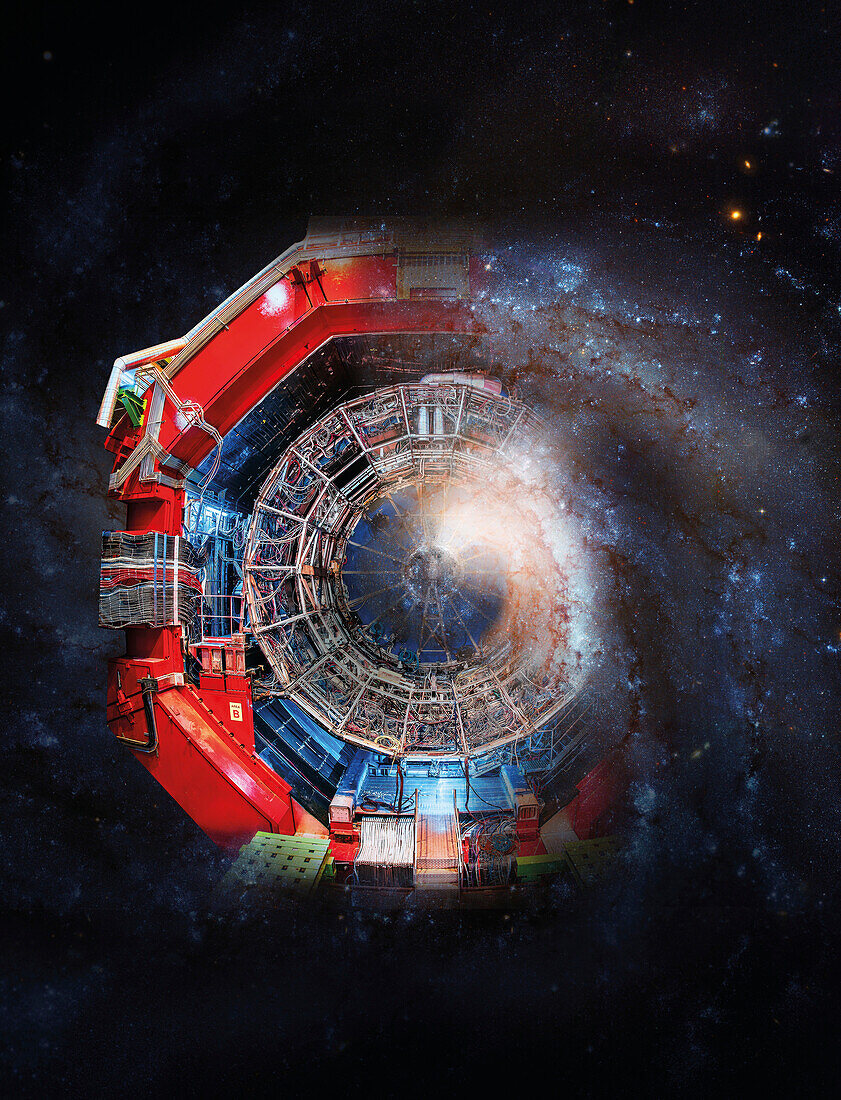Antihelium annihilation, ALICE detector
Bildnummer 14113121

| Visualisation of the annihilation of antihelium (anti-3He) nuclei by ALICE (A Large Ion Collider Experiment) at CERN (European Particle Physics Laboratory). Researchers found that antihelium can travel long distances in the Milky Way and reach near-Earth locations without being absorbed. To achieve this, the researchers used data on antihelium nuclei produced at the Large Hadron Collider (LHC) and fed it into models that simulate the propagation of cosmic particles in our galaxy. Two models were used, one which assumes that sources of cosmic rays are collisions with the interstellar medium and the other which describes them as hypothetical dark-matter particles. The team then estimated the transparency of the Milky Way to antihelium nuclei for each model. For the dark-matter model, they obtained a transparency of about 50 percent, whereas, for the cosmic-ray model, the transparency ranged from 25 percent to 90 percent depending on the energy of the antinucleus. These findings therefore also demonstrate that the search for light antimatter nuclei from outer space is a powerful way to hunt for dark matter. | |
| Lizenzart: | Lizenzpflichtig |
| Credit: | Science Photo Library / CERN / Stephan Alexander Konigstorfer |
| Bildgröße: | 2799 px × 3661 px |
| Modell-Rechte: | nicht erforderlich |
| Eigentums-Rechte: | nicht erforderlich |
| Restrictions: |
|
Preise für dieses Bild ab 15 €
Universitäten & Organisationen
(Informationsmaterial Digital, Informationsmaterial Print, Lehrmaterial Digital etc.)
ab 15 €
Redaktionell
(Bücher, Bücher: Sach- und Fachliteratur, Digitale Medien (redaktionell) etc.)
ab 30 €
Werbung
(Anzeigen, Aussenwerbung, Digitale Medien, Fernsehwerbung, Karten, Werbemittel, Zeitschriften etc.)
ab 55 €
Handelsprodukte
(bedruckte Textilie, Kalender, Postkarte, Grußkarte, Verpackung etc.)
ab 75 €
Pauschalpreise
Rechtepakete für die unbeschränkte Bildnutzung in Print oder Online
ab 495 €
